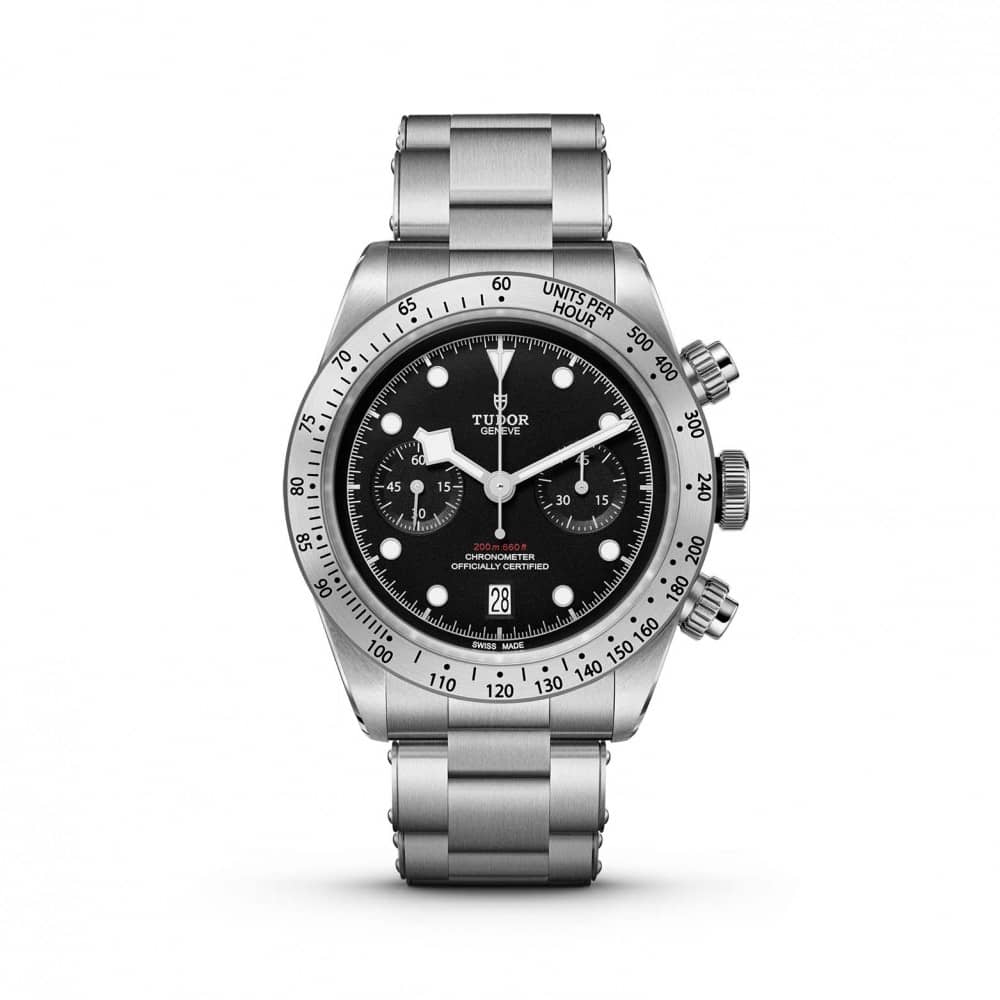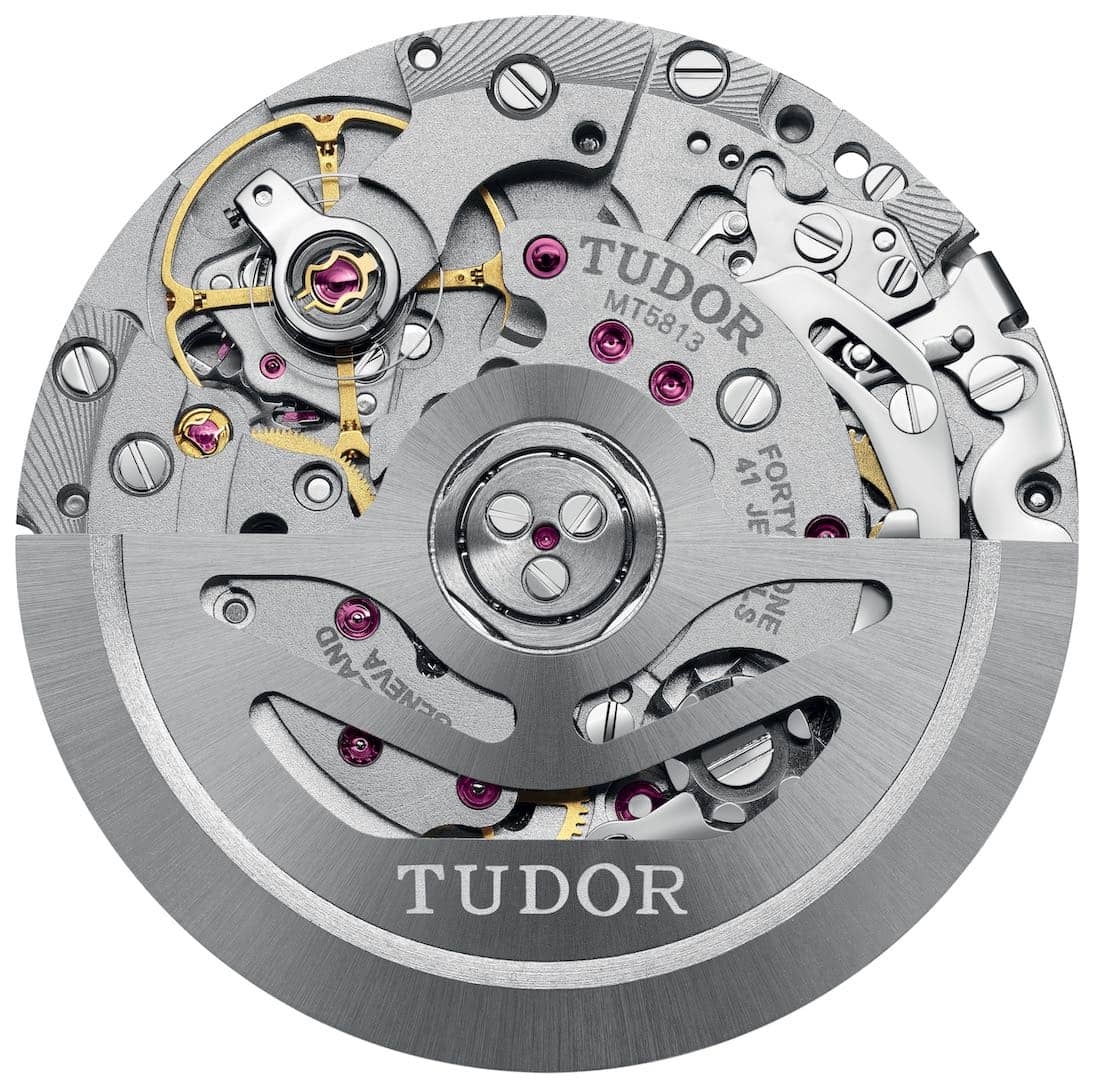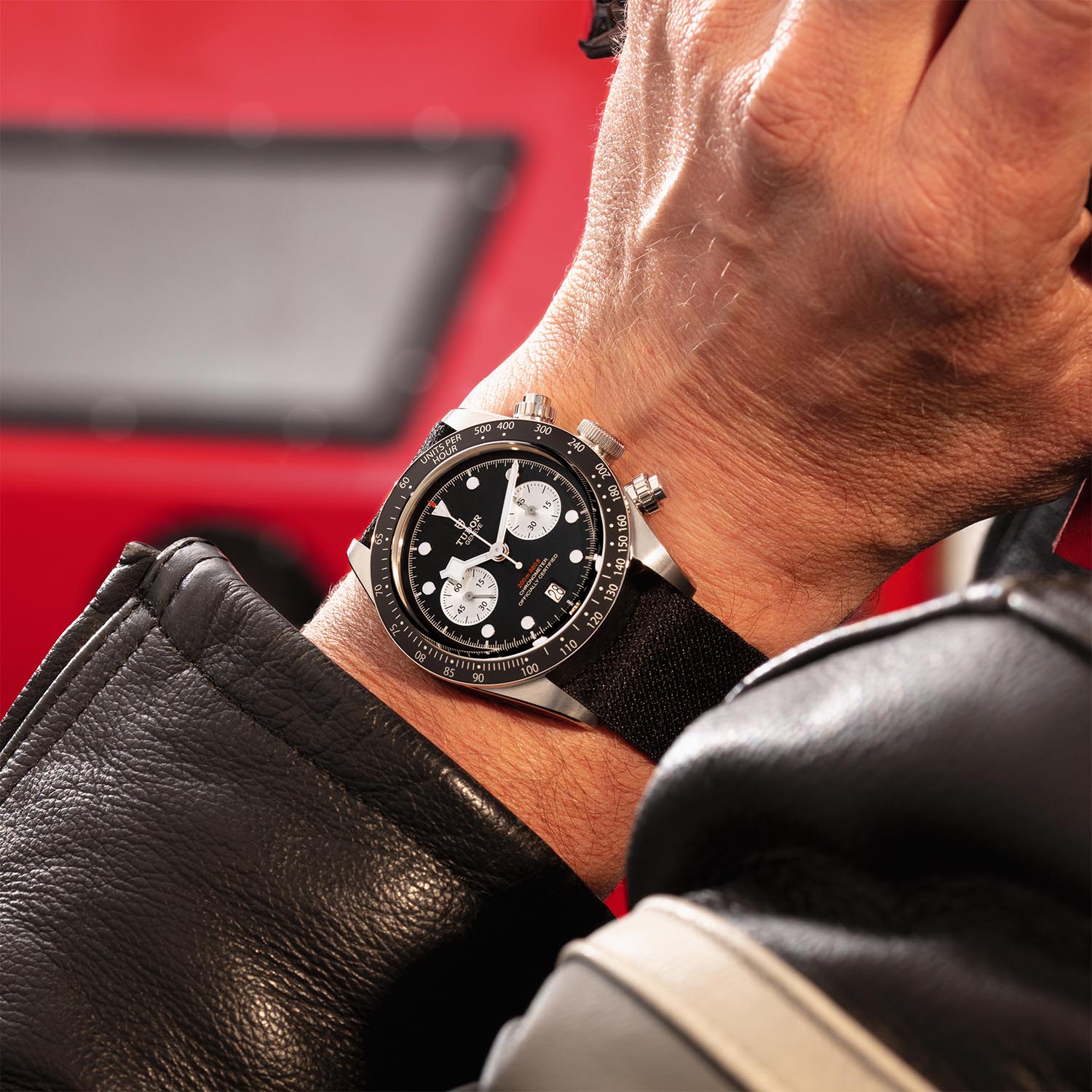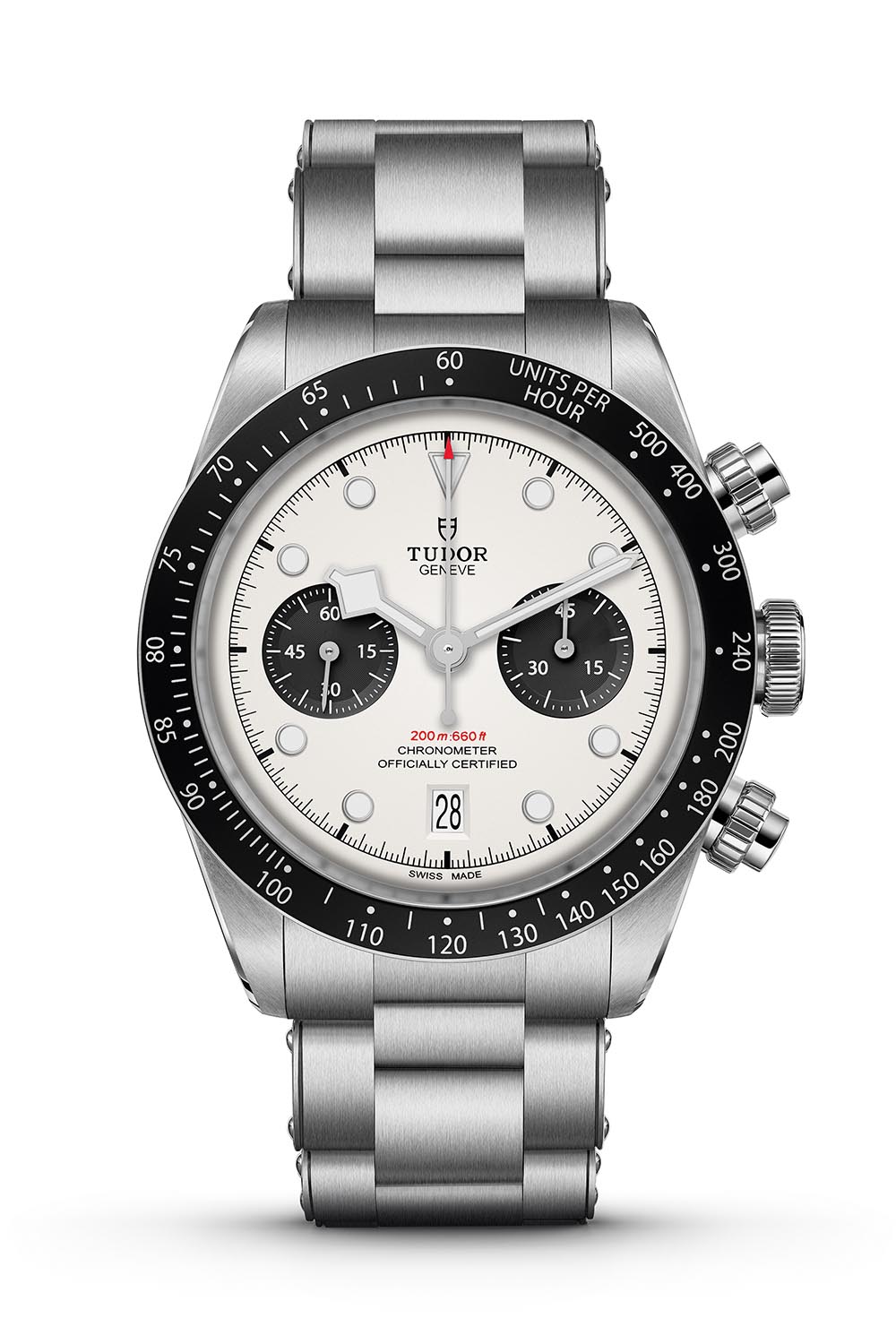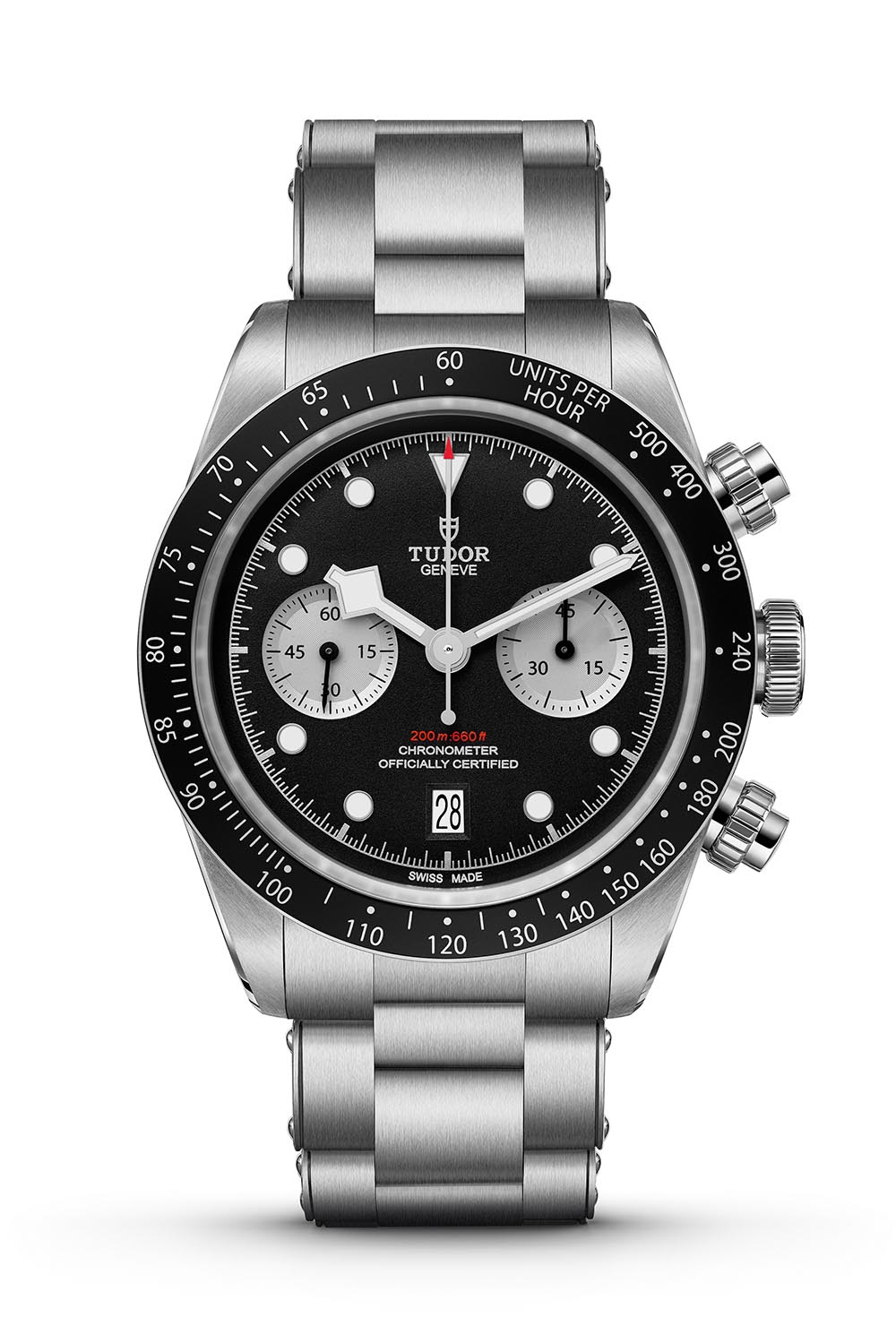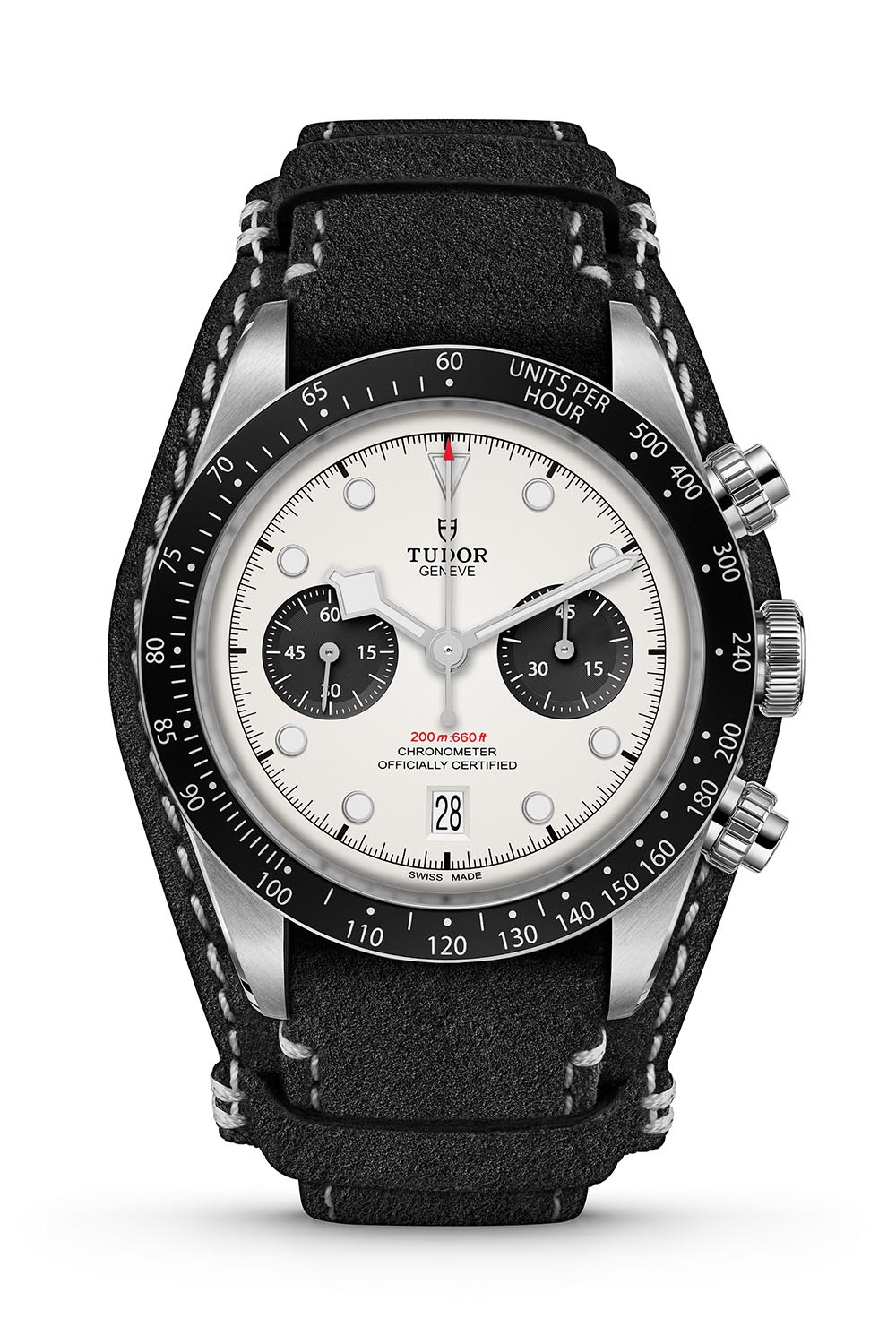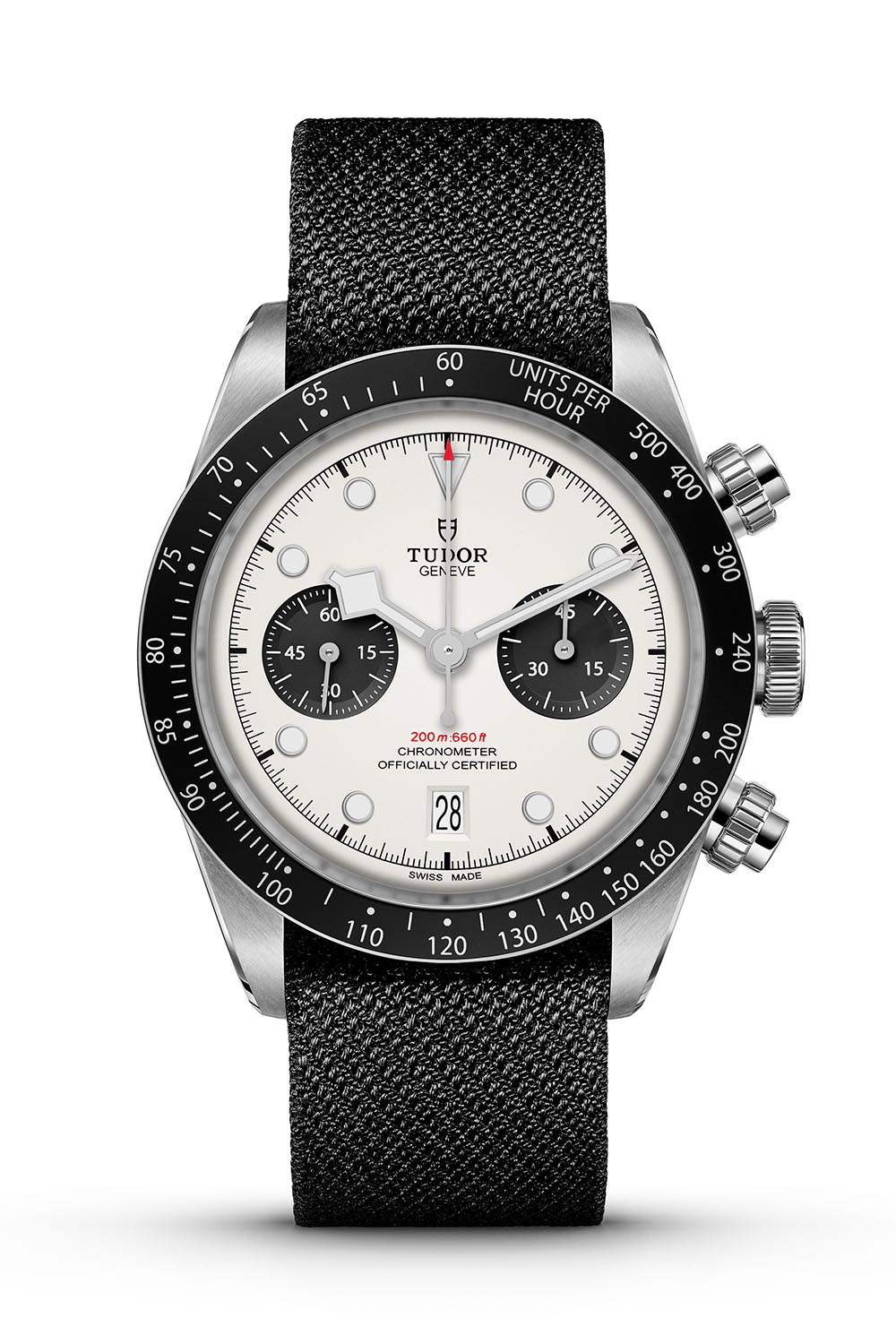The genesis of the Tudor Black Bay Chrono has always been something of a puzzle to me. On the one hand you have the aquatic heritage of the Black Bay family. On the other is Tudor’s long-standing association with the racetrack. Combining them, according to Tudor at least, results in a unique hybrid chronograph. Whatever that means. The cynic in me would argue the brand was looking for ways to capitalise on the popularity of the Black Bay range. And to be fair, they probably were. But in doing so, they actually created a pretty cool watch. And one that I think offers good value for money. If bought at the right price. Keep reading to find out why.
A (Very) Brief History Of The Tudor Black Bay Chrono
Launched in 2017, the Black Bay Chrono took the market by surprise. (Much like the Tudor P01 a few years later. Although that watch – as predicted – has proven to be less of a commercial success.) It wasn’t like there wasn’t already precedent for dive watches with chronographs. The Omega Seamaster 300 and Planet Ocean collections have done it for years. Ditto with Breitling’s SuperOcean and a bevy of others. What sets the Black Bay Chrono apart though is the fact that it’s very much a mix of two worlds.
If you look at the Seamaster Diver 300M Chronograph for example, it’s clear it’s still very much a dive watch. The only real difference vs the original is the twin chronograph registers in the middle of the dial. And the chronograph pushers either side of the crown. It’s safe, and predictable and people like it. The Black Bay Chrono meanwhile does not follow this tried and true blueprint. Instead, Tudor created a new watch that incorporates the foundations of the Black Bay. But that also establishes its own identity.
To do that, Tudor used the same 41mm steel case as other models in the collection. Complete with alternating polished and satin finishes. The brand also incorporated other hallmarks of the Black Bay collection. Distinctive snowflake hands. Over-sized screw down crown complete with Tudor rose engraved and lacquered in black. And a high-contrast dial for improved readability in all conditions. In other words, there’s no doubt this model belongs to the Black Bay collection. Even if doesn’t look quite like anything else in the line-up.
Like other chronograph dive watches, Tudor uses a bi-compax set up. This means twin sub-dials across the middle of the dial. Those sub-dials are concave to add depth to the dial and create an added sense of contrast. At three o’clock, there’s a 45-minute counter for the chronograph. Whilst the sub-dial at nine o’clock is for the running seconds. The date appears in a window below at six o’clock. Above it is the 200m water-depth rating in red, a subtle nod to Tudor’s vintage dive models.
Racing Heritage
Where things start to deviate from the norm though is with the bezel. Most chronograph-equipped dive watches keep the classic rotating count-down bezel. Not so on the Black Bay Chrono. Instead, Tudor opted for a fixed bezel in circular satin-brushed steel. (Matt black anodised aluminium on the more recent models. But we’ll get to those.) Complete with an engraved tachymetric scale. And this is where the brand’s racing heritage comes into play.
Tudor came somewhat late to the racing chronograph scene. The brand didn’t launch it’s first racing chronograph – the Oysterdate – until 1970. Almost a decade after the Rolex Daytona Ref 6239 made its debut. But Tudor made up for lost time with bold (and colorful) designs that were well suited to the era. One of the distinguishing features of a Tudor chronograph was the 45-minute counter. The standard design calls for a 30-minute counter. Hence the modern-day Black Bay Chrono gives a subtle nod to this historic quirk.
By and large I would say Tudor is still better known for its diving watches. But there’s no denying the legitimacy of their racing watch heritage too. There was something even more surprising than the pairing of these two genres though. And that was the real-world partnership Tudor entered into for the movement.
Tudor x Breitling
Inside the Black Bay Chrono is the self-winding Calibre MT5813. It’s denoted by Tudor as a Manufacture chronograph movement. But it was actually developed and manufactured for Tudor by Breitling. A fact that Tudor was very transparent about at the time of launch. The MT5813 uses Breitling’s main chronograph movement, the B01 – found in the Navitimer, Chronomat, etc – as a base. Which means a column-wheel chronograph mechanism with vertical clutch. And a silicon balance spring.
It’s not a pure Breitling movement though. It features Tudor’s proprietary adjustable moment of inertia balance wheel. Hairspring. And finishes. It’s also certified as a chronometer by the Swiss Official Chronometer Testing Institute. What is interesting to note is that the Chronomat – with similar movement – retails for a touch over $8k. Whereas the Tudor comes in at much more competitive price point.
That’s no doubt one of the reasons the Black Bay Chrono has proven popular. So much so in fact that Tudor released two new and improved panda versions in 2021. Let’s take a quick look at them now.
Tudor Black Bay Chrono Ref 79360N
This is the new Black Bay Chrono Ref 79360N. Two versions are available. One with a panda dial (white with black sub-dials). And the other with a reverse panda dial (black with white sub-dials). They replace the original, all steel model, which is no longer in the collection. But there’s more going on here than a simple change in the dial colour scheme.
To start, a clever redesign of the case makes these the slimmest versions of the Black Bay Chrono yet. At a svelte 14.2mm it’s still not anywhere near thin mind you. But that is a big improvement on the previous 14.9mm case thickness. And well within the realms of what’s acceptable for a sporty chronograph like this one. It also looks slimmer thanks to the use of a domed sapphire crystal. The case diameter remains unchanged at 41mm. Which means the Black Bay Chrono is still quite a hefty watch on the wrist. But again, that’s what you would expect from a robust and rugged chrono. Especially one that also doubles as a dive watch – of sorts.
The Panda Dials
As mentioned before, there are two new dial configurations available. And both use contrast to help improve legibility over the original version. Tudor already introduced contrasting sub-dials on the S&G models, so they knew they were onto a winner. Plus, panda (and reverse panda) dials look cool. Ask any Paul Newman fan.
The dials aren’t perfect of course, and there have been some criticisms. One is that the white hands can get a big lost against the white dial, making it harder to read in some conditions. Another is a carry-over from the original model. And that is that the snowflake hour hand blocks the 45-minute counter between 1:30 and 4:30. I say blocks, but it’s more accurate to say it ‘partially obscures’. Neither is that big of a problem in my opinion, but each to their own.
Another welcome change is the new matt black anodised aluminium bezel insert. Complete with tachymeter scale printed in silver. This is a big improvement over the original, which if you recall was in matching brushed steel. Not only did make it harder to read but it also made the case look bigger than it was. Now you get a nice framing effect, especially on the panda dial version. Although there’s no denying it also looks a lot more like a vintage Rolex Daytona now. Especially with that red lettering for the depth rating. There’s no doubt this was intentional, not that there’s anything wrong with that.
Straps On Straps On Straps
This being Tudor, the Black Bay Chrono offers good variety as far bracelet/strap options go. There’s a stainless steel bracelet. Inspired by the folding riveted bracelets made by TUDOR in the 1950s and 1960s. A black Jacquard-woven fabric strap. That one is by the Julien Faure company in the St-Etienne region. And finally, there is a bund strap in aged black leather with ecru topstitching and folding clasp. Very much in keeping with the “1970s racing” spirit. Not sure I could pull that one off but it does look cool.
Inside is the Manufacture chronograph Calibre MT5813. The same movement developed with Breitling discussed above. And which made its debut in the 2017 original. There’s nothing wrong with that of course. The movement has proven itself to be a reliable and robust work horse. Not to mention accurate, as attested to by its chronometer certification. And that 70-hour power reserve is hard to beat on a watch at this price point.
Price & Availability
Retail price of the Tudor Black Bay Chrono Ref 79360 is US$5,225 on a bracelet. And US$4,900 on a strap. That’s around $3k cheaper than a Chronomat. Although Breitling will argue quality, brand recognition, etc. If you were contemplating between the two, my advice would be to get them side by side. As far as availability goes, these new models are accessible. Although you may have to wait a few months as Tudor plays the scarcity game on popular models. Like everyone else. That said I haven’t heard of anyone complaining about lengthy waiting lists.
As time goes on you will see more of these trickle onto the secondary market as well. With a few exceptions Tudors don’t typically appreciate in value. So, if you’re patient you might be able to pick up one below retail from someone like our retail partner, WatchBox. (Affiliate link.)
It The Black Bay Chrono Good Value For The Money?
You can make a pretty convincing argument that the Black Bay Chrono is good value for the money. Reputable brand. Nice design. In-house movement. Sensible pricing. It ticks a lot of boxes. Resale value might not be amazing, but it’s definitely competitive amongst its peers. You might want to consider also whether this is suitable for a one watch collection. I would suggest not, unless you never have the need to dress up.
At the end of the day, what you see is what you get with Tudor. A hint of vintage aesthetic combined with modern and robust design. And that touch of quirkiness the brand is known for. Like putting a tachymeter scale on a diving watch.
Technical Specifications: Tudor Black Bay Chrono Ref M79360N
- Case: 41mm x 14.2mm – steel case and bezel – black anodised aluminium insert – tachymeter scale – screw-down chronograph pushers – screw-down crown – sapphire crystal – enclosed screw-in caseback – 200m water-resistance
- Dial: domed matte black or opaline white dial – contrasting recessed sub-dials at 3 and 9 o’clock – Snowflake hour hand – red-tipped centrally mounted chronograph seconds hand – applied roundels for the hours – Super-LumiNova – date window at 6 o’clock
- Movement: calibre MT5813, manufacture (based on Breitling B01) – COSC-certified – automatic integrated chronograph with vertical clutch and column wheel – 30.4mm x 7.23mm – 28,800vph – 70h power reserve – 41 jewels – non-magnetic silicon balance spring and variable inertia balance – hours, minutes, small seconds, date, chronograph with 45 minute counter.
- Bracelet: riveted steel bracelet – black Jacquard fabric – Bund-style black leather strap.
- Price: US$5,225 (bracelet)/ US$4,900 (strap)
This article by TheWatchLounge has been sponsored by our partner WatchBox.
